USDA's Food and Nutrient Database for Dietary Studies (FNDDS) is a database that is used to convert food and beverages consumed in What We Eat In America (WWEIA), National Health and Nutrition Examination Survey (NHANES) into gram amounts and to determine their nutrient valuesThe DRI model proved to be challenging To overcome methodological limitations, guidance for expanding the DRI model to include a new category of values specific to chronic disease risk reduction was provided in the 17 National Academies report, Guiding Principles for Developing Dietary Reference Intakes Based on Chronic DiseaseIntake recommendations for zinc and other nutrients are provided in the Dietary Reference Intakes (DRIs) developed by the Food and Nutrition Board (FNB) at the Institute of Medicine of the National Academies (formerly National Academy of Sciences) DRI is the general term for a set of reference values used for planning and assessing nutrient
The Confusing World Of Dri Dv And Tdicinnamonvogue Com Blog
Dri values usda
Dri values usda-US Department of Agriculture, Agricultural Research Service, Home and Garden Bulletin 72 This publication gives in tabular form the nutritive values for household measures of commonly used foods It was first published in 1960;Dietary Reference Intakes for Calcium and Vitamin D provides reference intake values for these two nutrients The report updates the DRI values defined in Dietary Reference Intakes for Calcium, Phosphorus, Magnesium, Vitamin D, and Fluoride, the 1997 study from the Institute of Medicine




Defining Nutrient Requirements Dietary Reference Intakes Nutrition Science And Everyday Application
Intake recommendations for thiamin and other nutrients are provided in the Dietary Reference Intakes (DRIs) developed by the Food and Nutrition Board (FNB) at the Institute of Medicine of the National Academies (formerly National Academy of Sciences) DRI is the general term for a set of reference values used for planning and assessingA Dietary Reference Intakes (DRI) The Dietary Reference Intakes (DRI) include two sets of values that serve as goals for nutrient intake—Recommended Dietary Allowances (RDA) and Adequate Intakes (AI) The RDA reflect the average daily amount of a nutrient considered adequate to meet the needs of most healthy peopleThe DRIs are set by the IOM's FNB and can be accessed from FNIC's Dietary Reference Intakes page The DRIs are a common set of reference values for a healthy population based on the relationships between nutrient intakes and health or the prevention of disease DRI is a generic term for a set of nutrient reference values that include the EAR, the RDA, the AI and the UL
Which person would NOT be covered by the Dietary Reference Intakes (DRI) values?Daily Values are comprised of two sets of reference values for reporting nutrients in nutrition labels—the Daily Reference Values (DRVs) and the Reference Daily Intakes DietaryCholesterol, dietary fiber, fatty acids, foods, iron, niacin, nutrient composition, nutrient data, potassium, protein, riboflavin, salt, sodium, total fat, vitamin A Revised October 02 The US Department of Agriculture (USDA) prohibits discrimination in all
Dietary Reference Intakes for Calcium and Vitamin D 1104 DIETARY REFERENCE INTAKES FOR CALCIUM AND VITAMIN D Dietary Reference Intakes (DRIs) Estimated Average Requirements Food and Nutrition Board, Institute of Medicine, National Academies Life Stage Group Calcium (mg/d) CHO (g/kg/d) Protein (g/d) Vit A (m g/d) a Vit C (mg/d) Vit D (m g/d) Vit E Dietary Reference Intakes (DRIs) are a set of reference values used to plan and assess nutrient intakes of healthy people They are used widely in Designing and evaluating research studies and results Developing dietary guidelines and food guides Planning and tracking nutritionrelated public health programs and diets for military personnelThe Nutrition Facts label on food and beverage packages shows the amount in grams (g) and the % Daily Value (%DV) of saturated fat per serving of the food The Daily Value for saturated fat is less than g per day This is based on a 2,000 calorie daily diet—your Daily Value may be higher or lower depending on your calorie needs
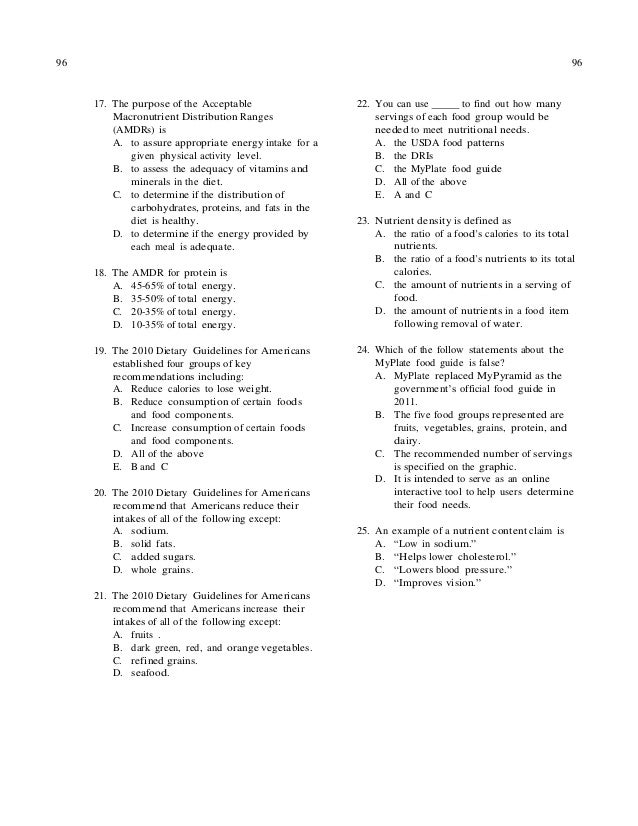



Nutr 1st Edition Mc Guire Test Bank



Onlinelibrary Wiley Com Doi Pdf 10 1111 J 1753 47 08 X
Intake recommendations for vitamin D and other nutrients are provided in the Dietary Reference Intakes (DRIs) developed by expert committees of NASEM DRI is the general term for a set of reference values used for planning and assessing nutrient intakes of healthy people These values, which vary by age and sex, includeWhen referring to the DRI recommended intakes, it is important to remember that a they are designed to help an individual recover from an illness b they are the minimum values needed to maintain health c they are based on the latest available scientific research d they must be consumed daily because they do not account for varied intakesAlso included is a "Summary Table of Dietary Reference Intakes," an updated practical summary of the recommendations In addition, Dietary Reference Intakes The Essential Reference for Dietary Planning and Assessment provides information about Guiding principles for nutrition labeling and fortification;




Midterm Review Lecture Notes 1 6 Studocu
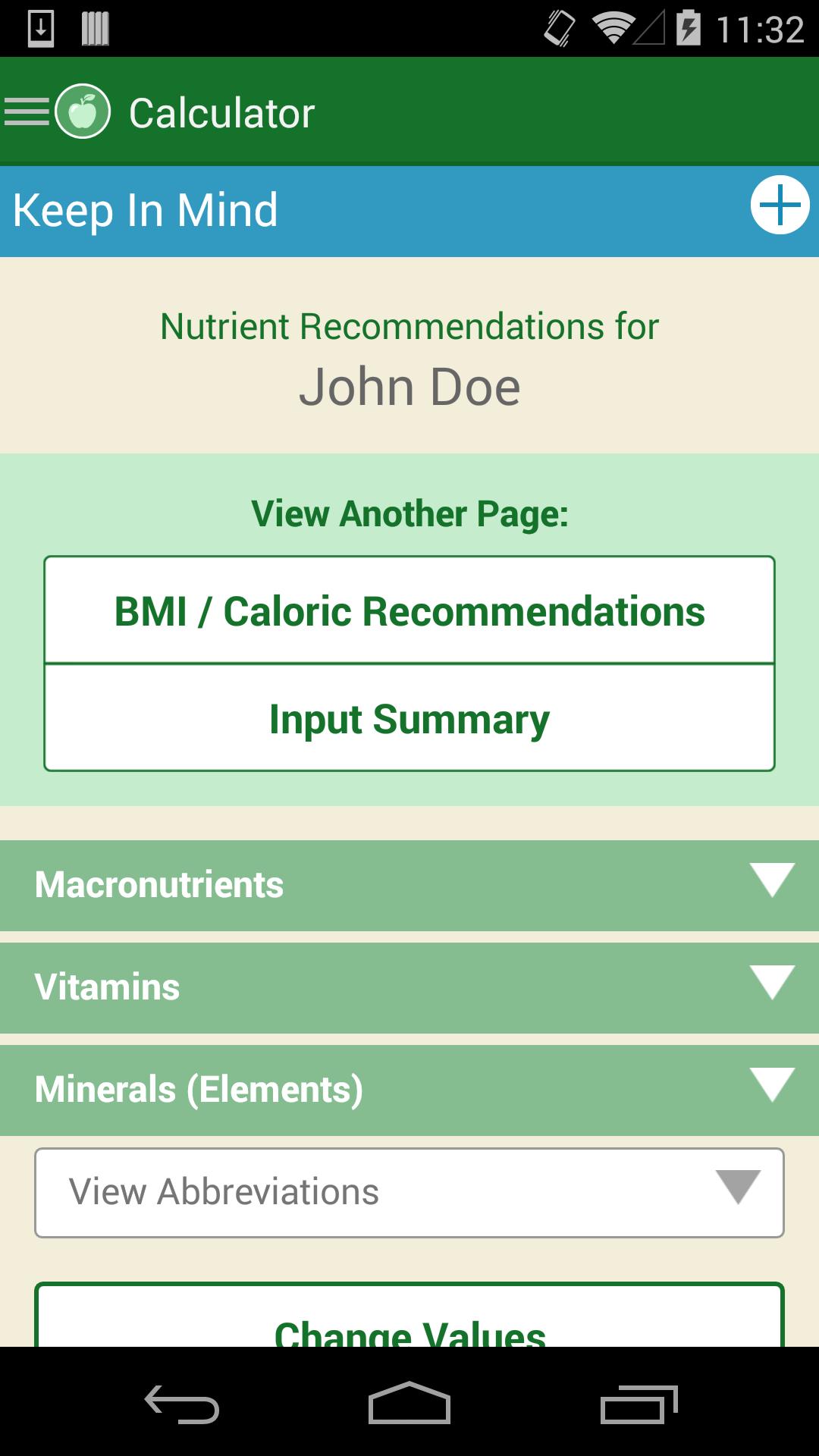



Usda Dri For Android Apk Download
DRI is the general term for a set of reference values used to plan and assess nutrient intakes of healthy people These values, which vary by age and sex, include Recommended Dietary Allowance (RDA) average daily level of intake sufficient to meet the nutrient requirements of nearly all (97%98%) healthy people Recommended Dietary Allowances (RDA), the daily dietary intake level of a nutrient considered sufficient by the Food and Nutrition Board of the Institute of Medicine to meet the requirements of 975% of healthy individuals in each lifestage and sex group The definition implies that the intake level would cause a harmful nutrient deficiency in just 25%A Karen, a 36yearold pregnant woman b Kelly, a 30yearold woman who is an avid athlete c Tim, a yearold vegetarian d Ann, a 5yearold who refuses to eat vegetables e Joe, a 50yearold who has inflammatory bowel disease




Percentage Of Dietary Reference Intakes Dri Per Serving Nutrient New Download Table
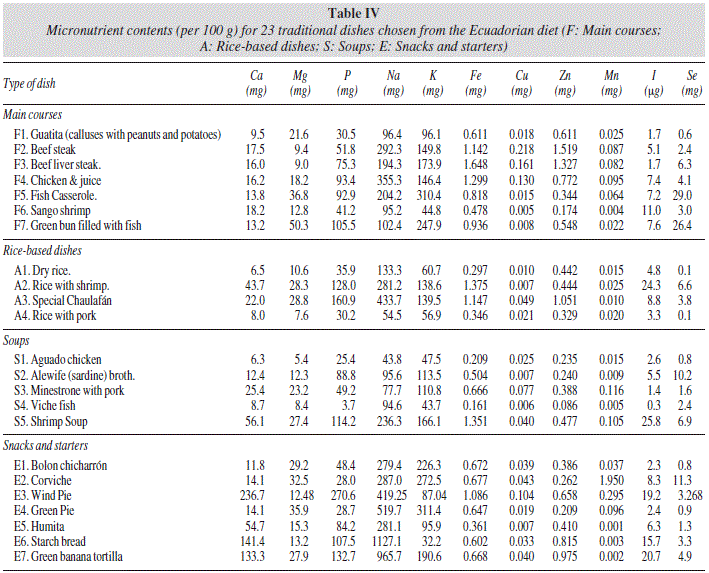



0212 1611 Nutricion Hospitalaria Nutr Hosp 0212 1611 Grupo Aran S0212 10 3305 Nh 13 28 5 6766 Preliminary Nutritional Assessment Of The Ecuadorian Diet Based On A 24 H Food Recall Survey In Ecuador Evaluacion Nutricional
2 Suggested citation USDA Food and Nutrient Database for Dietary Studies, 41(10) Beltsville, MD US Department of Agriculture, Agricultural Research Service, Food Surveys Research Group DISCLAIMERS The use of trade, firm, or corporation names inOften used to planUse of Dietary Reference Intakes for Nutrient Assessment of Groups The Food and Nutrition Board of the Institute of Medicine, National Academies, established a set of reference values for nutrients called Dietary Reference Intakes (DRIs) for use in planning and assessing diets of apparently healthy people (17)




Guidelines For Food And Nutrient Intake Basicmedical Key



The Confusing World Of Dri Dv And Tdicinnamonvogue Com Blog
DRI is the general term for a set of reference values used for planning and assessing nutrient intakes of healthy people These values, which vary by age and sex, include The US Department of Agriculture's (USDA's) FoodData Central Food and Nutrition Board Dietary Reference Intakes Vitamin C, Vitamin E, Selenium, andApplications in dietary planningUSDA develops and promotes dietary guidance and nutritional recommendations aimed at improving the health and wellbeing of Americans Dietary Guidelines for Americans The Dietary Guidelines for Americans, jointly issued by USDA and the Department of Health and Human Services, are the cornerstone of Federal nutrition policy and nutrition education activities
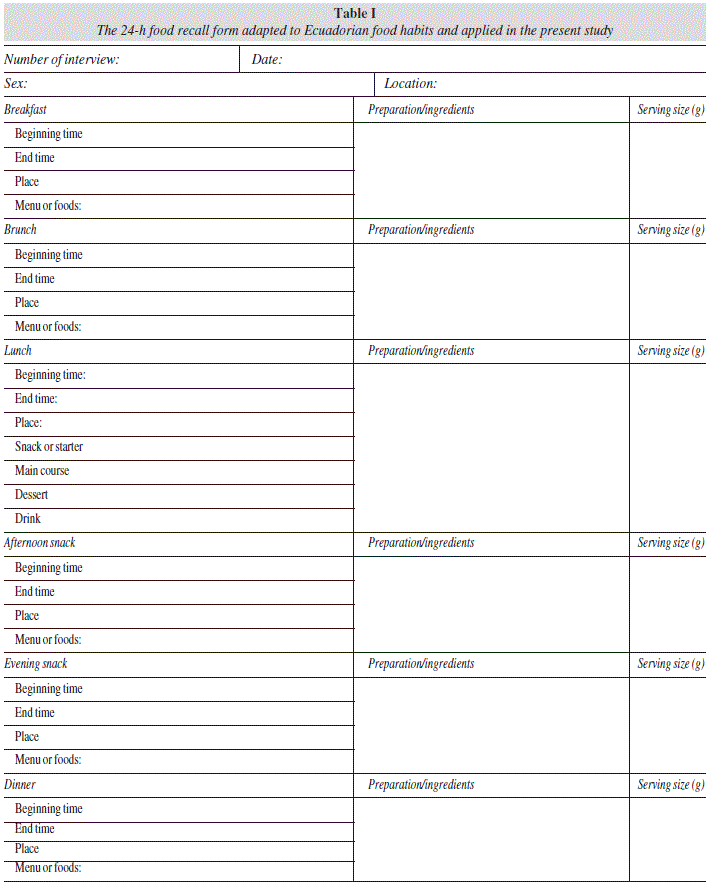



0212 1611 Nutricion Hospitalaria Nutr Hosp 0212 1611 Grupo Aran S0212 10 3305 Nh 13 28 5 6766 Preliminary Nutritional Assessment Of The Ecuadorian Diet Based On A 24 H Food Recall Survey In Ecuador Evaluacion Nutricional



Www Dietaryguidelines Gov Sites Default Files 07 Fpm Protocol Under2years Pdf
Body weight come from the United States Department of Agriculture (USDA) Continuing Survey of Food Intakes by Individuals ( CSFII) , 1998 The percentages of individuals meeting the Dietary Reference Intakes 1 (DRI) are based on day1 nutrient intakes from the CSFII and DRI values established during the period from the mid 1990's to 02FoodData Central takes the analysis, compilation, and presentation of nutrient and food component data to a new level FoodData Central Can be used by, and has benefits for, a variety of users, including researchers, policy makers, academicians and educators, nutrition and health professionals, product developers, and othersOriginal Daily Value Updated Daily Value Calcium 1000mg 1300mg Dietary Fiber 25g 28g Fat 65g 78g Magnesium 400mg 4mg Manganese
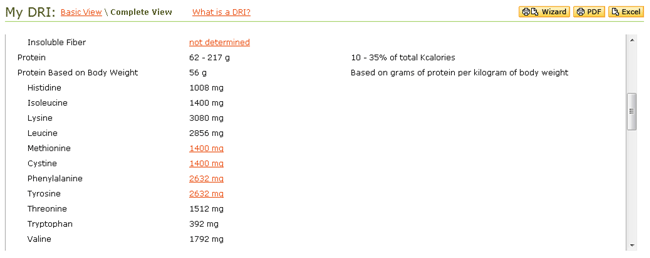



Iprofile 3 1 Help




Recommended Dietary Intakes Nutritional Doublethink
The USDA Food and Nutrient Database for Dietary Studies (FNDDS) converts foods and beverages consumed in What We Eat in America (WWEIA), National Health and Nutrition Examination Survey (NHANES) into gram amounts and determines their nutrient values USDA Recommended Sugar Intake Sugar lends delicious sweetness to food and gives an energy boost to your day when you're in a slump But Americans consume too much sugar, with 16 percent of the average diet coming from added sugars, according to the USDA's Dietary Guidelines for Americans 10 In fact, sugar isThe Dietary Reference Intakes (DRIs) are developed and published by the Institute of Medicine (IOM) The DRIs represent the most current scientific knowledge on nutrient needs of healthy populations Please note that individual requirements may be higher or lower than the DRIs Should you want to distribute or reprint a DRI resource, please
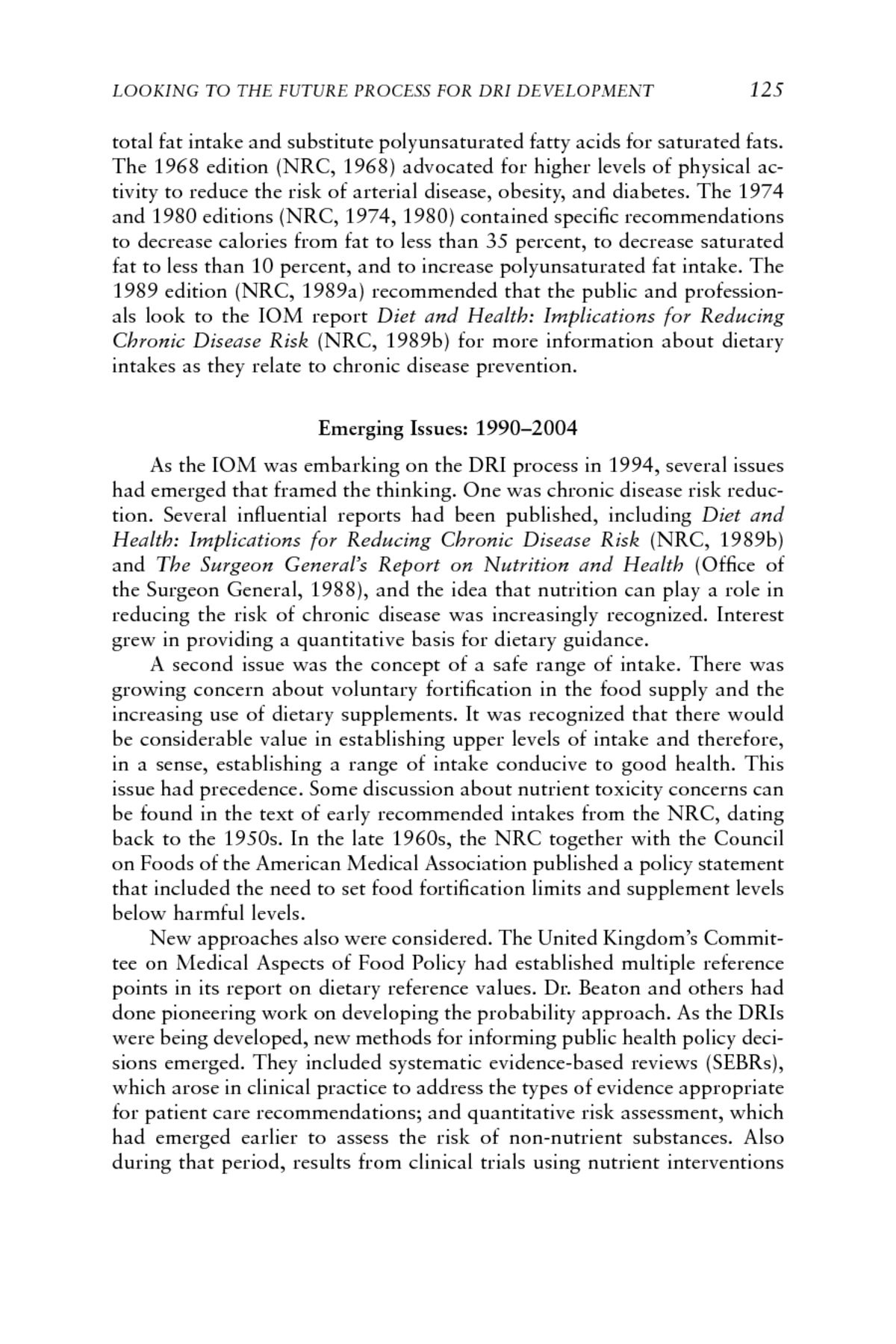



5 Looking To The Future Process For Dri Development Session 4 The Development Of Dris 1994 04 Lessons Learned And New Challenges Workshop Summary The National Academies Press




8 4 Dietary Reference Intakes Dris Nutrition
DRI is the general term for a set of reference values used to plan and assess nutrient intakes of healthy people These values, which vary by age and sex, include Recommended Dietary Allowance (RDA) Average daily level of intake sufficient to meet the nutrient requirements of nearly all (97–98%) healthy individuals;Along with dietary reference values for the intakes of nutrients by Americans and Canadians, this book presents recommendations for health maintenance and the reduction of chronic disease risk Also included is a "Summary Table of Dietary Reference Intakes," an updated practical summary of the recommendationsDRI Calculator for Healthcare Professionals This tool will calculate daily nutrient recommendations based on the Dietary Reference Intakes (DRIs) established by the Health and Medicine Division of the National Academies of Sciences, Engineering and Medicine The data represents the most current scientific knowledge on nutrient needs however
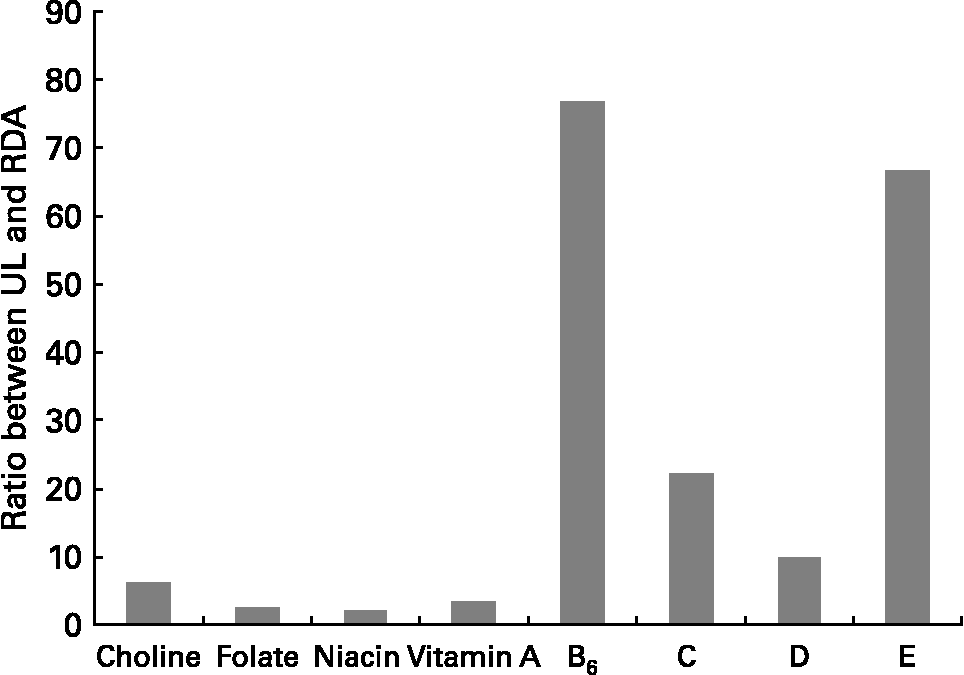



Dietary Reference Intake Dri Value For Dietary Polyphenols Are We Heading In The Right Direction British Journal Of Nutrition Cambridge Core




Interpreting And Using The Dietary References Intakes In Dietary Assessment Of Individuals And Groups Journal Of The American Dietetic Association
The Dietary Reference Intakes (DRI) provide reference values for vitamins, minerals and other nutrients that 1) indicate daily intake amounts that meet the needs of most healthy people, and 2) set intake levels not to exceed to avoid harm These reference values provide an important source of evidence for the Dietary Guidelines by helping usThe RDAs are a single set of nutrientspecific values During deliberations in the mid1990s, the FNB decided to replace this single set of values with multiple sets of values, including the EAR, RDA, AI and UL for designated age groups, physiologic states (for example, pregnancy), and by sex These values are collectively referred to as the DRIs To view the DRI tables, click theThe last revision was published in 1991 In this revision, values for total dietary fiber have been added and



Summary Report Of The Dietary Reference Intakes National Academies




Usda Daily Reference Intakes Dri S By The National Academy Of Download Table
The "USDA Dietary Reference Intakes (DRI) Calculator for Healthcare Professionals" app allows users to keep track of nutrient calculations and recommendations that are based on the DRI values in a more convenient and userfriendly format Through this new app, healthcare professionals can save time in the nutrition care process for patientsHome Dietary Guidelines for AmericansThe Food and Nutrition Service contracted with the Institute of Medicine (now called the Academy of Medicine) to propose a framework to assess dietary risk based on "failure to meet the Dietary Guidelines for Americans" This job aid summarizes the key findings and recommendations in the IOM report Dietary Risk Assessment in the WIC Program




5 Looking To The Future Process For Dri Development Session 4 The Development Of Dris 1994 04 Lessons Learned And New Challenges Workshop Summary The National Academies Press
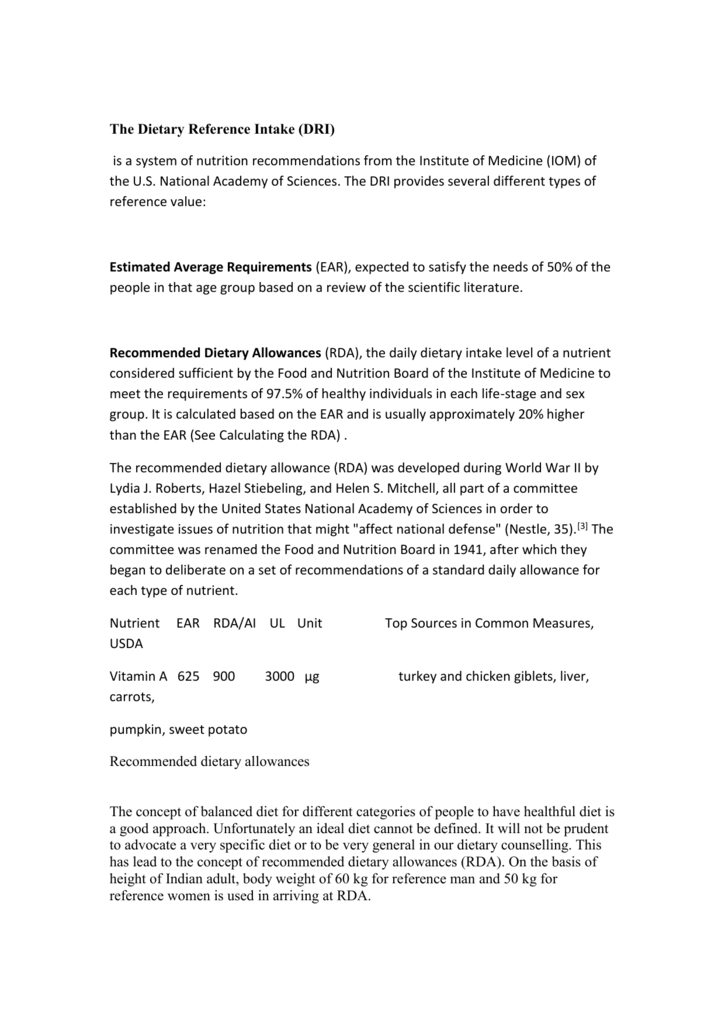



The Food Table Or Board
Data from the 15–16 National Health and Nutrition Examination Survey (NHANES) show that among children and teens aged 2–19 years, the average daily phosphorus intake from foods is 1,237 mg 29 In adults aged and older, the average daily phosphorus intake from foods is 1,1 mg for women and 1,596 mg for men The DRI and daily value both provide information about nutrients, but the DRI establishes the guidelines for how much of each nutrient you need, while the daily value tells you how much of the nutrients you're actually getting from the foods you eat The scope of information they provide is also different For women age 3150 years, the AI is 1,500 mg of sodium per day The CDRR is "reduce intakes if above 2,300 mg/day" The committee didn't establish CDRR for potassium, although they lowered the potassium AIs The full charts for the new values can be found here Note that for sodium, we refer to the CDRR column




Choosing Foods Wisely Chapter 02 What Is Nutritional




Dietary Reference Intakes Ppt Video Online Download
As dietary folate equivalents (DFE) 1 DFE = 1 µg food folate = 06 µg of folic acid from fortified food or as a supplement con sumed with food = 05 µg ofThe Dietary Reference Intakes (DRI) has set recommended intake and limits for vitamins, minerals, and carbohydrates, fiber, lipids, protein, water, and energy __________also set by the DRI committee, establish the average nutrient requirements for given life stages and gender groups that researchers and nutrition policy makers use in their workSuggested citation USDA Food and Nutrient Database for Dietary Studies, 30 (08) Beltsville, MD US Department of Agriculture, Agricultural Research Service, Food Surveys Research Group DISCLAIMERS The use of trade, firm, or corporation names in this publication is for the information and convenience of the reader




Usda Dri Calculator For Healthcare Professionals By Blue Pane Studio Llc
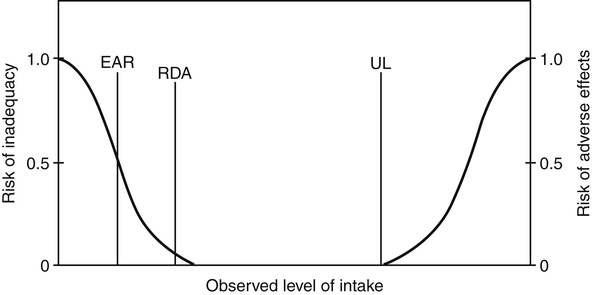



Guidelines For Food And Nutrient Intake Basicmedical Key
FNDDS is updated and released every 2 years in conjunction with the What We Eat in America, NHANES dietary data release Each version is developed for use with a specific survey period to reflect the foods/beverages and corresponding nutrient values for that timeframe FNDDS is not required to use the dietary intake data files




Table 1 From Choice Of Dri Value For Use In Nutrition Labeling Semantic Scholar




Usda Food Pattern For A 00 Calorie Diet From 1 Download Table
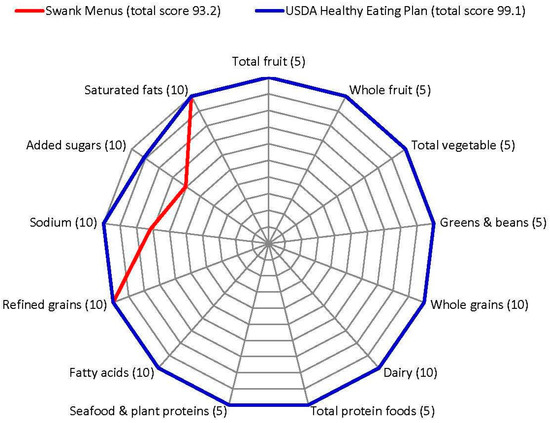



Nutrients Free Full Text Nutrient Composition Comparison Between The Low Saturated Fat Swank Diet For Multiple Sclerosis And Healthy U S Style Eating Pattern Html
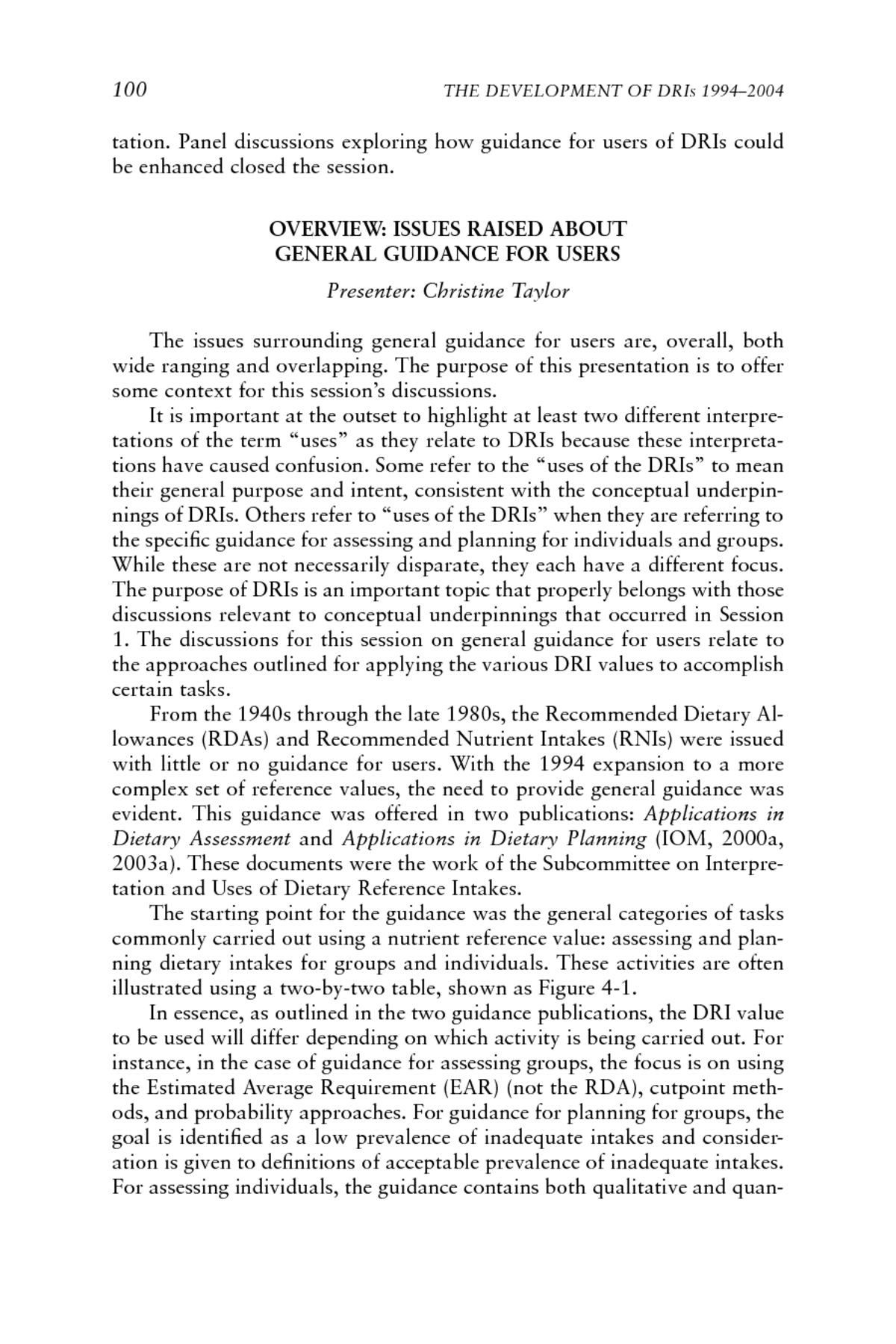



4 General Guidance For Users Of Dris Session 3 The Development Of Dris 1994 04 Lessons Learned And New Challenges Workshop Summary The National Academies Press
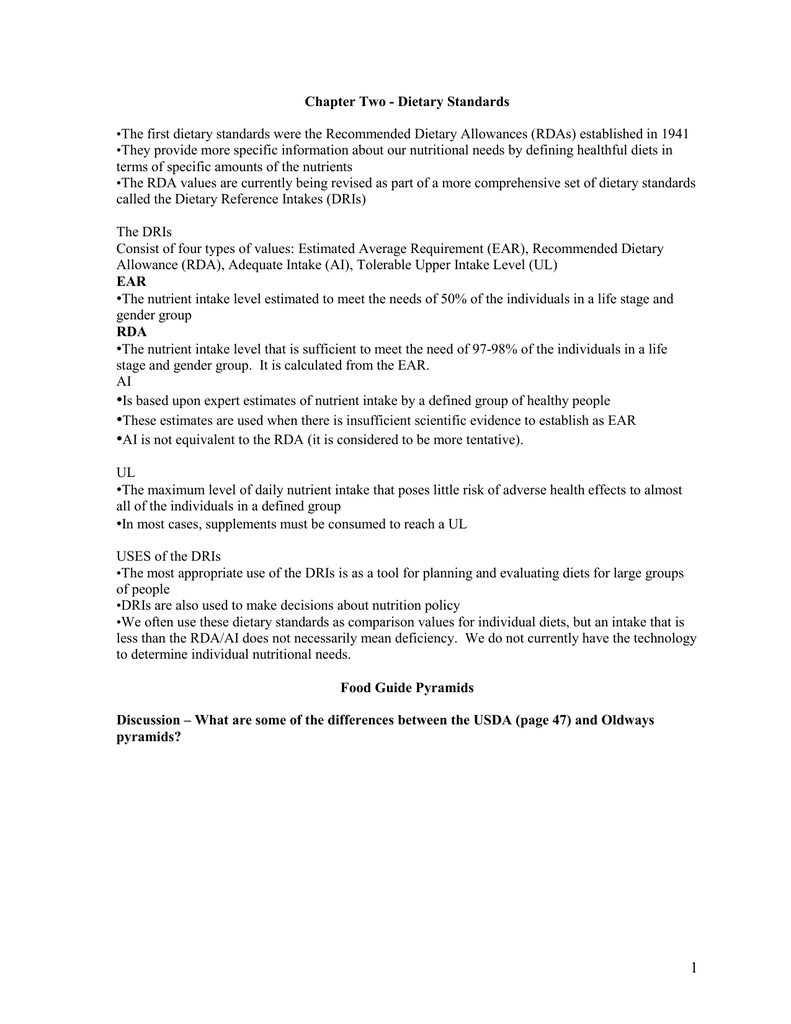



Chapter Two Dietary Standards



The Confusing World Of Dri Dv And Tdicinnamonvogue Com Blog




Options For Basing Dietary Reference Intakes Dris On Chronic Disease Endpoints Report From A Joint Us Canadian Sponsored Working Group Abstract Europe Pmc




Usda Dri Calculator For Healthcare Professionals By Blue Pane Studio Llc




Focus On Nutrition With Dri Calculator For Healthcare Professionals App Digital Gov




Chapter 3 Understanding Nutritional Standards And Guidelines Nutrition




Food Scientists Dietary Reference Intakes An Important Alliance Ift Org
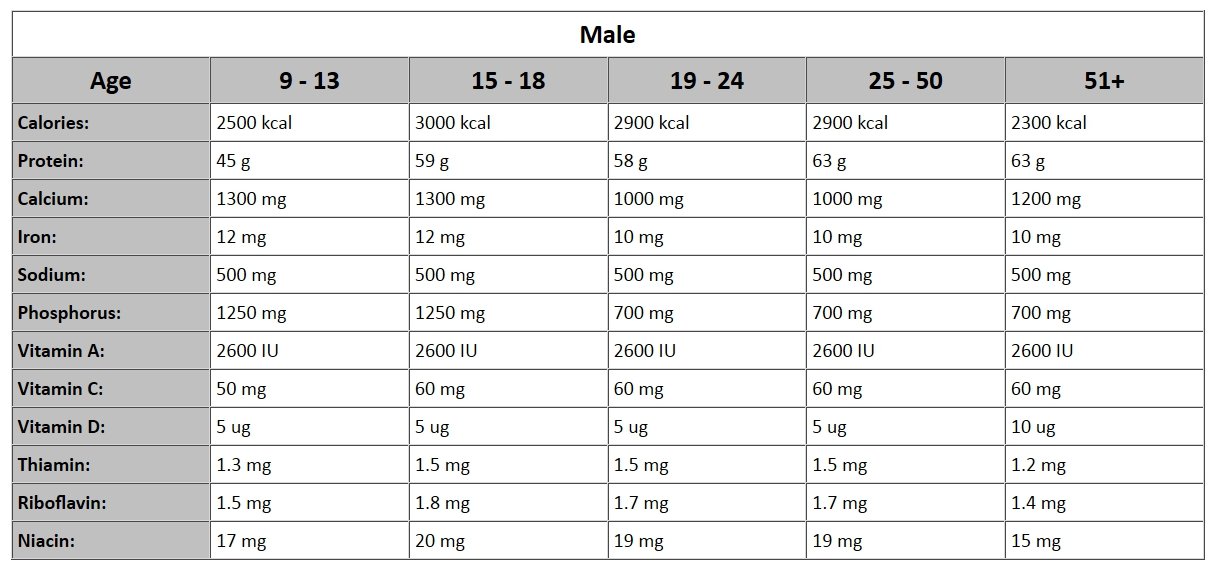



Ifa Usda Nutritional Recommended Daily Allowances
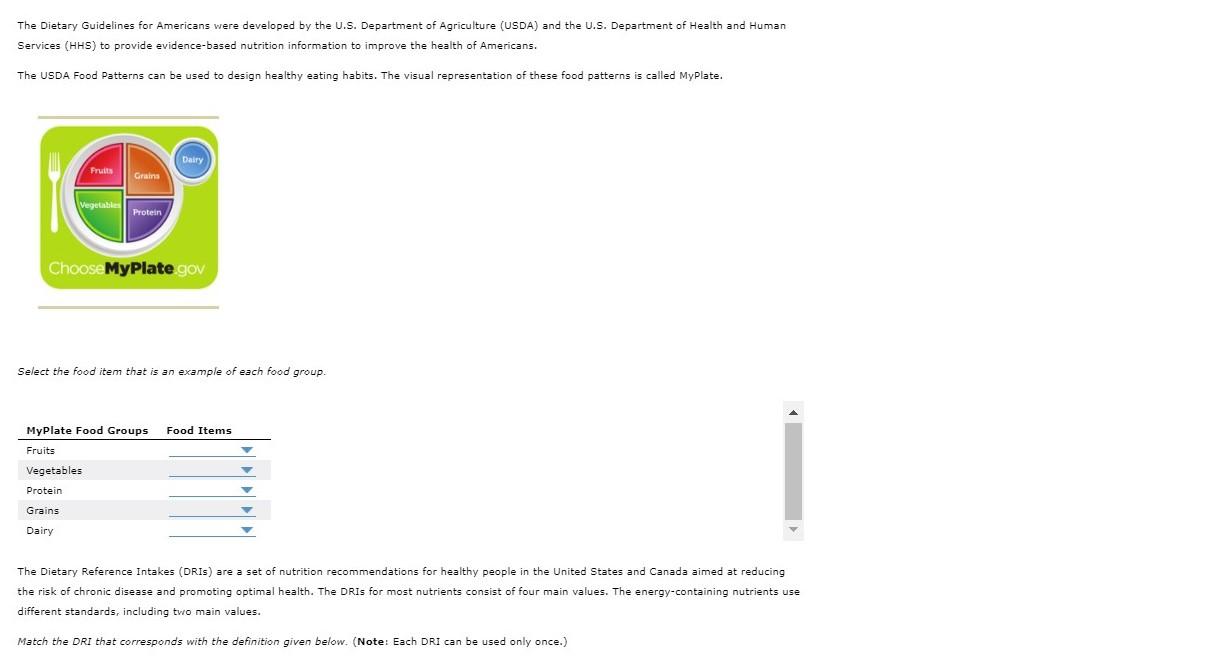



The Dietary Guidelines For Americans Were Developed Chegg Com



Food Nutrition Apps Ctauclm Ciencia Y Tecnologia De Alimentos Uclm
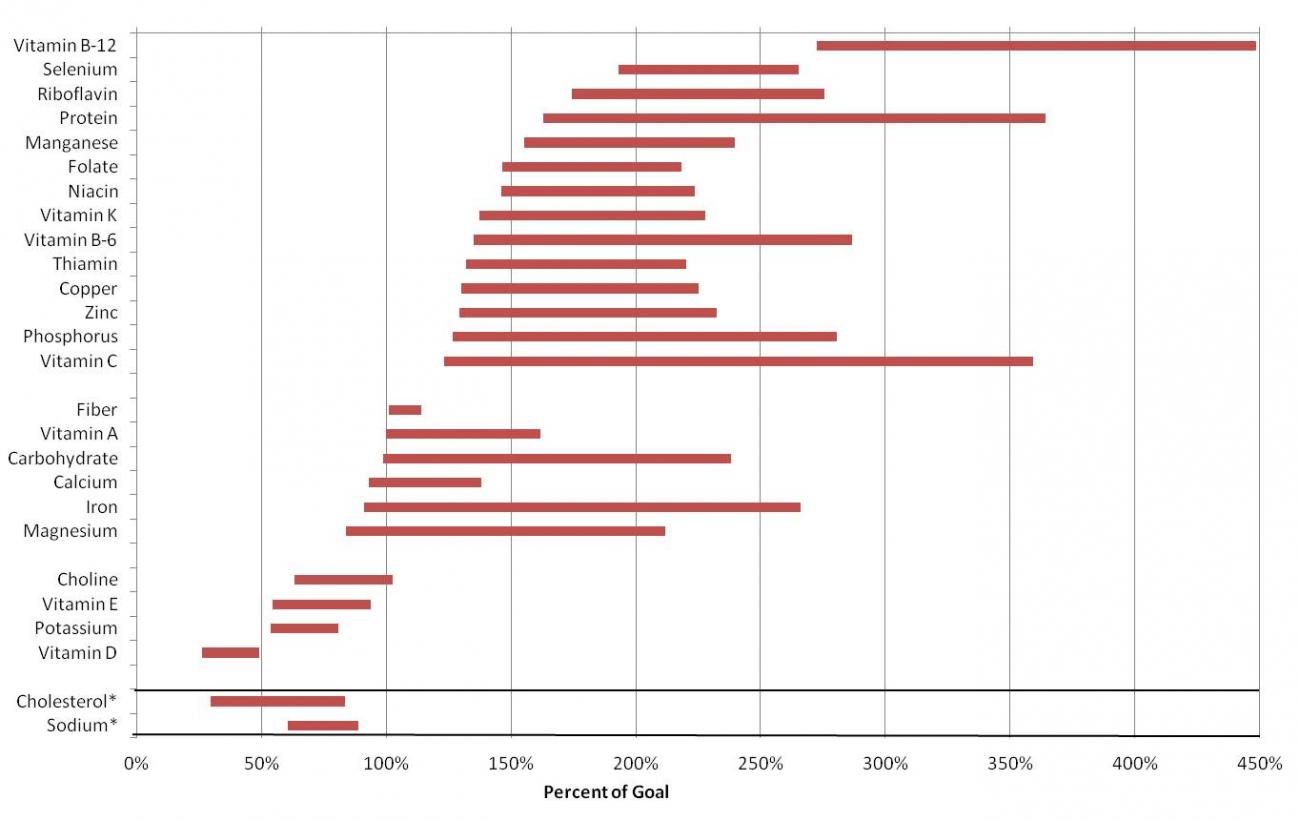



Appendix E 3 1 Health Gov



Www Usdairy Com Getmedia 0caf28ce C6ce 4be0 Adfd Dbc8f942a3 13 Nutrients In Milk Infographic 21 Pdf
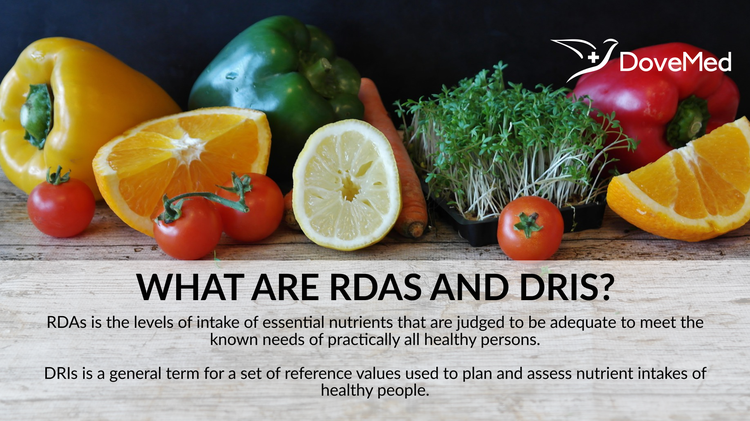



What Are Rdas And Dris




8 4 Dietary Reference Intakes Dris Nutrition




Usda Dri For Android Apk Download



3



Food Nutrition Apps Ctauclm Ciencia Y Tecnologia De Alimentos Uclm




Fnic Homepage




Intake Of Nutrients With Respect To Dietary Reference Intake Dri And Download Table




Pdf Dietary Reference Intake Dri Value For Dietary Polyphenols Are We Heading In The Right Direction
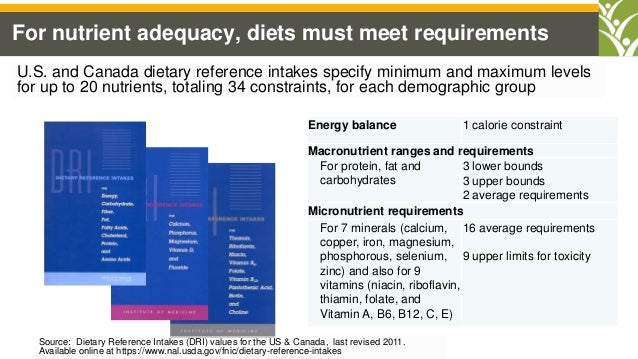



The Cost Of Nutritious Diets New Price Indexes Reveal Changes In Aff
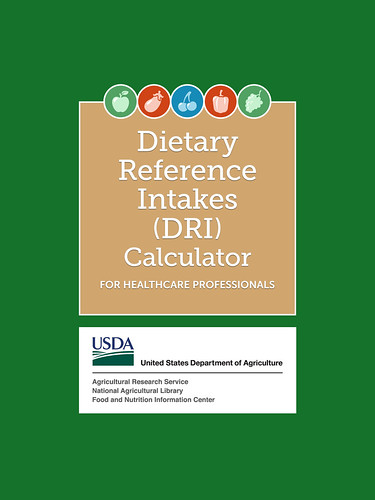



Meet Your Wellness Goals In The New Year With The Usda Dri Calculator For Healthcare Professionals App Usda
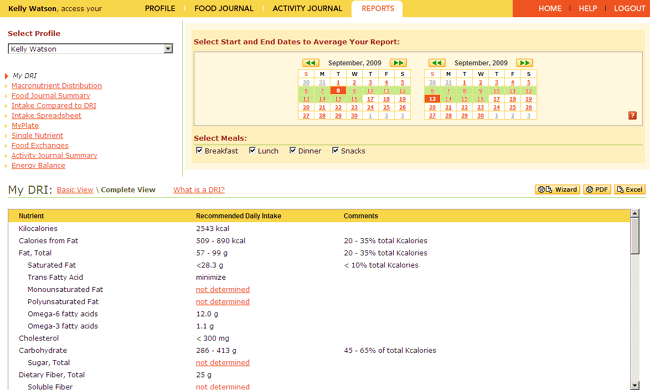



Iprofile 3 1 Help




Usda Dri For Android Apk Download




Pdf Us And Canadian Dietary Reference Intakes Dris For The Macronutrients Energy And Physical Activity Bethany Yon Academia Edu
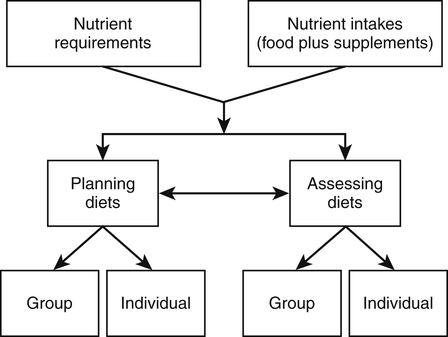



Guidelines For Food And Nutrient Intake Basicmedical Key
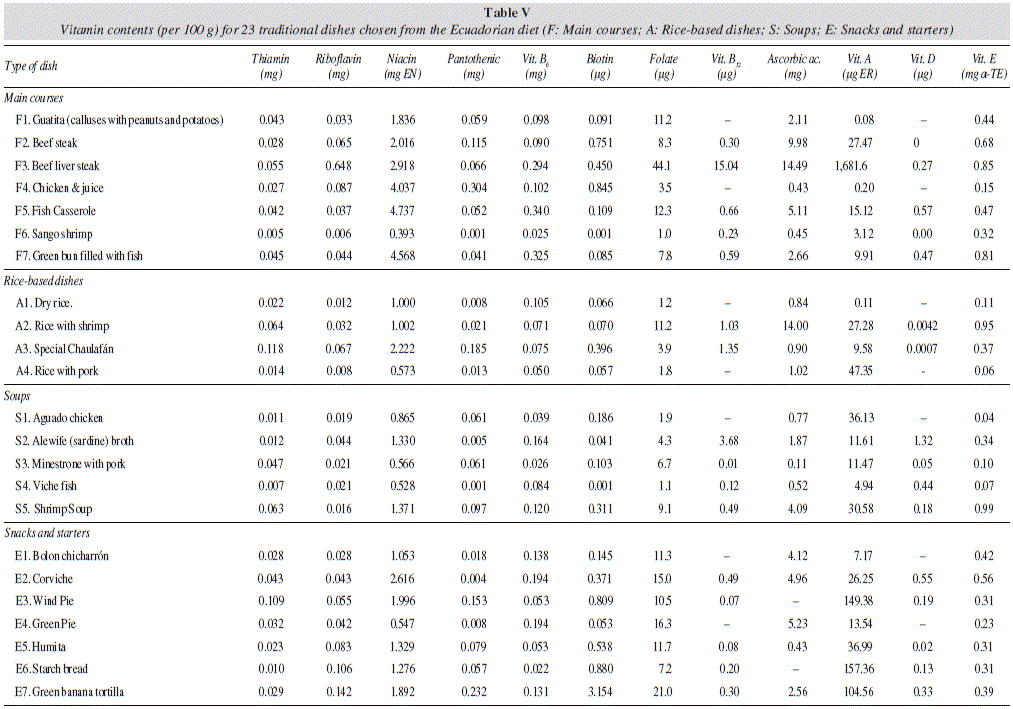



0212 1611 Nutricion Hospitalaria Nutr Hosp 0212 1611 Grupo Aran S0212 10 3305 Nh 13 28 5 6766 Preliminary Nutritional Assessment Of The Ecuadorian Diet Based On A 24 H Food Recall Survey In Ecuador Evaluacion Nutricional




Options For Basing Dietary Reference Intakes Dris On Chronic Disease Endpoints Report From A Joint Us Canadian Sponsored Working Group Abstract Europe Pmc




Chapter 3 Understanding Nutritional Standards And Guidelines Nutrition




The Dairy Alliance Fotos Facebook
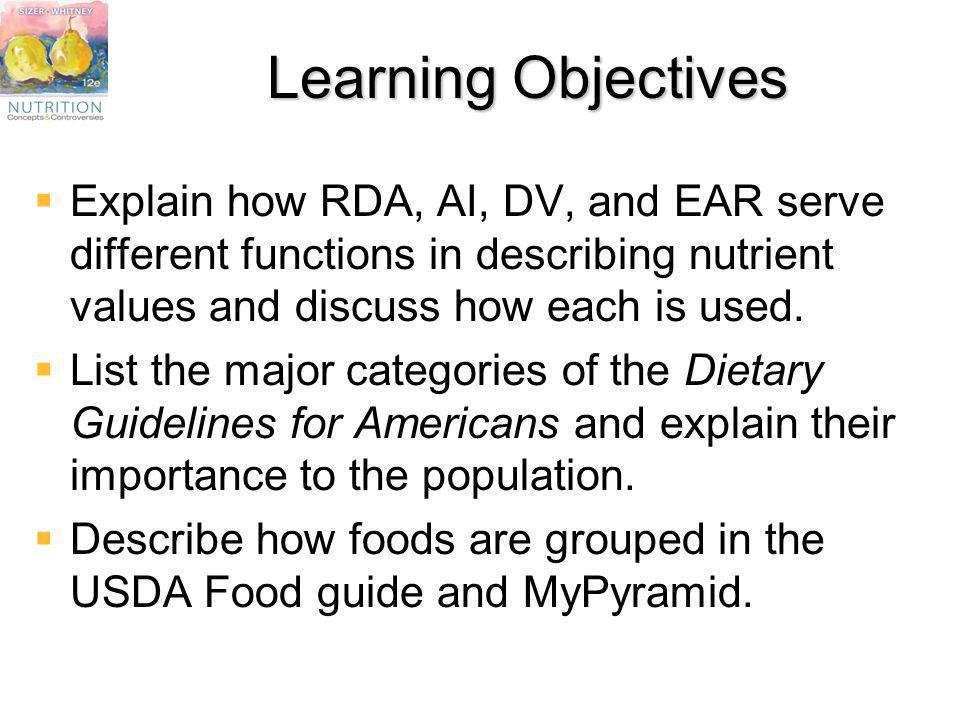



Chapter 2 Nutrition Tools Standards And Guidelines Ppt Video Online Download



Www Nal Usda Gov Sites Default Files Fnic Uploads Framework Dri Development Pdf




Zinc Dietary Reference Intakes The Essential Guide To Nutrient Requirements The National Academies Press
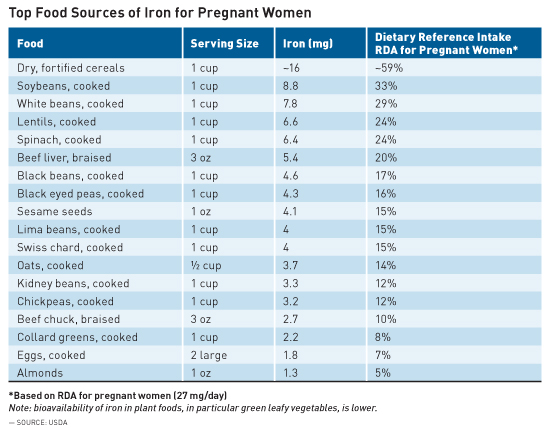



Iron In Pregnancy Maintaining Adequate Intake For Mother And Child




Dietary Reference Intake Dri Value For Dietary Polyphenols Are We Heading In The Right Direction British Journal Of Nutrition Cambridge Core




Usda Daily Reference Intakes Dri S By The National Academy Of Download Table
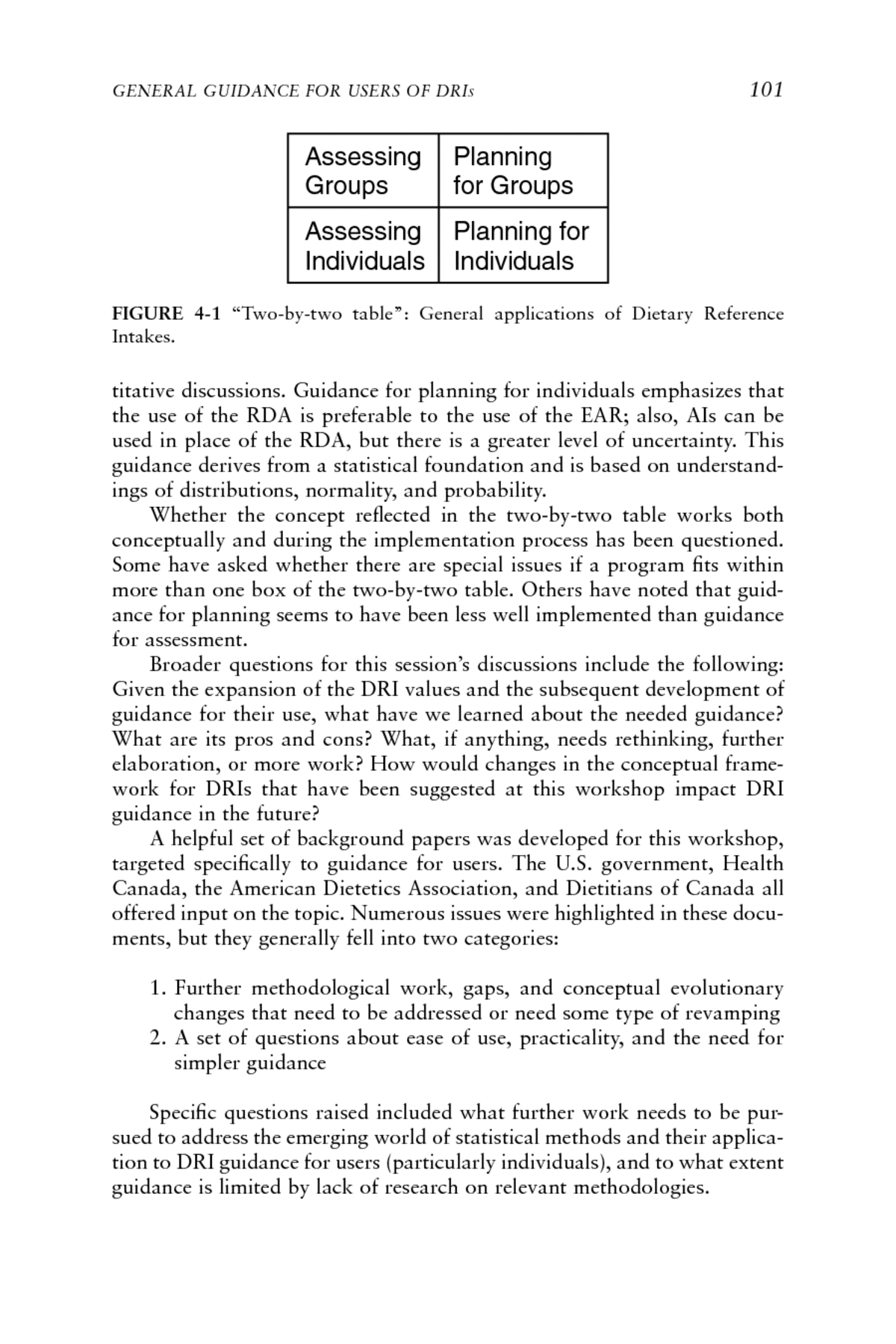



4 General Guidance For Users Of Dris Session 3 The Development Of Dris 1994 04 Lessons Learned And New Challenges Workshop Summary The National Academies Press




Nutrition Guidelines Tools For A Healthful Diet Biol




5 Looking To The Future Process For Dri Development Session 4 The Development Of Dris 1994 04 Lessons Learned And New Challenges Workshop Summary The National Academies Press



1
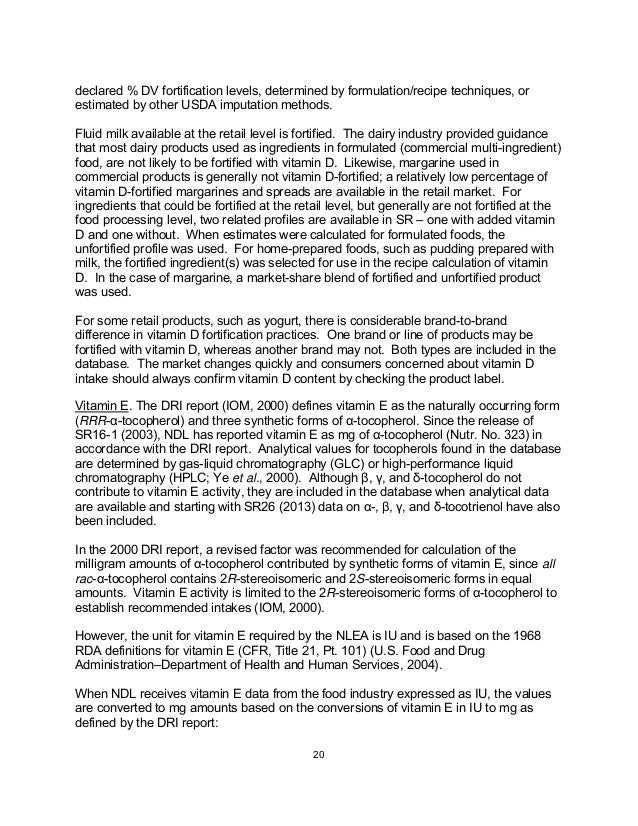



Sr26 Doc
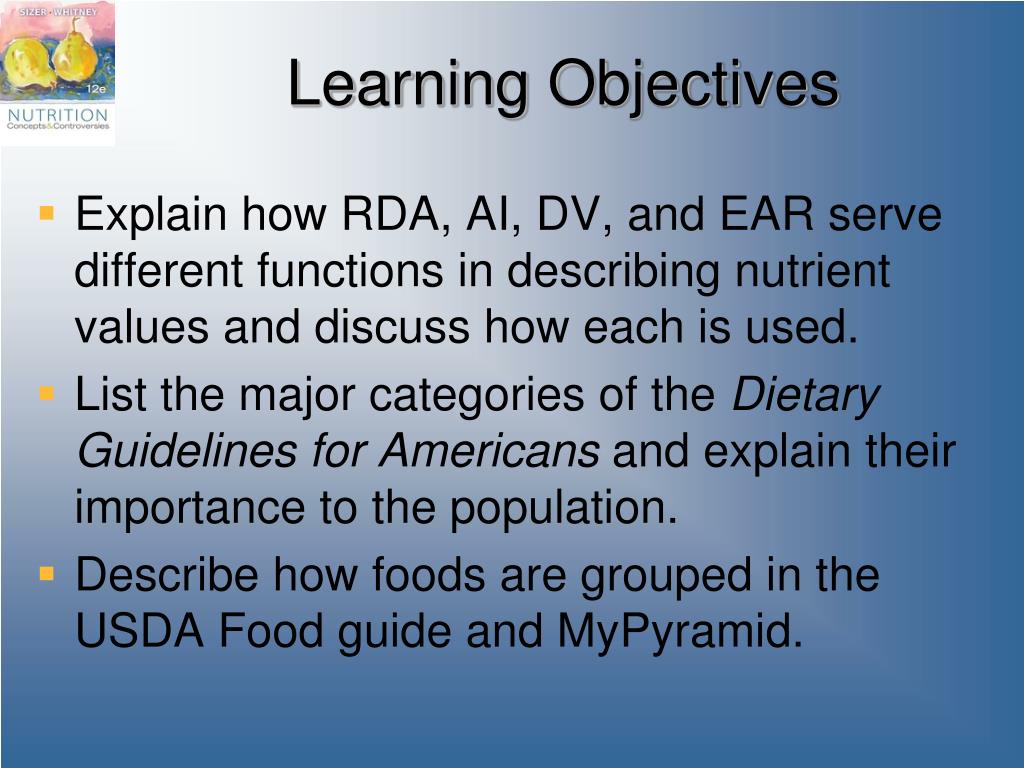



Ppt Chapter 2 Nutrition Tools Standards And Guidelines Powerpoint Presentation Id




Dietary Reference Intakes Journal Of The American Dietetic Association




Dietary Reference Intakes Dris For Nutrients Values From Myplate And Download Scientific Diagram




Defining Nutrient Requirements Dietary Reference Intakes Nutrition Science And Everyday Application
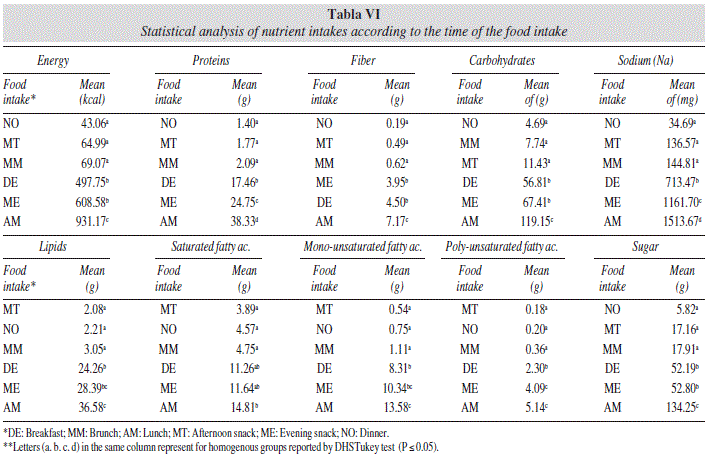



0212 1611 Nutricion Hospitalaria Nutr Hosp 0212 1611 Grupo Aran S0212 10 3305 Nh 13 28 5 6766 Preliminary Nutritional Assessment Of The Ecuadorian Diet Based On A 24 H Food Recall Survey In Ecuador Evaluacion Nutricional




Choosing Foods Wisely Chapter 02 What Is Nutritional
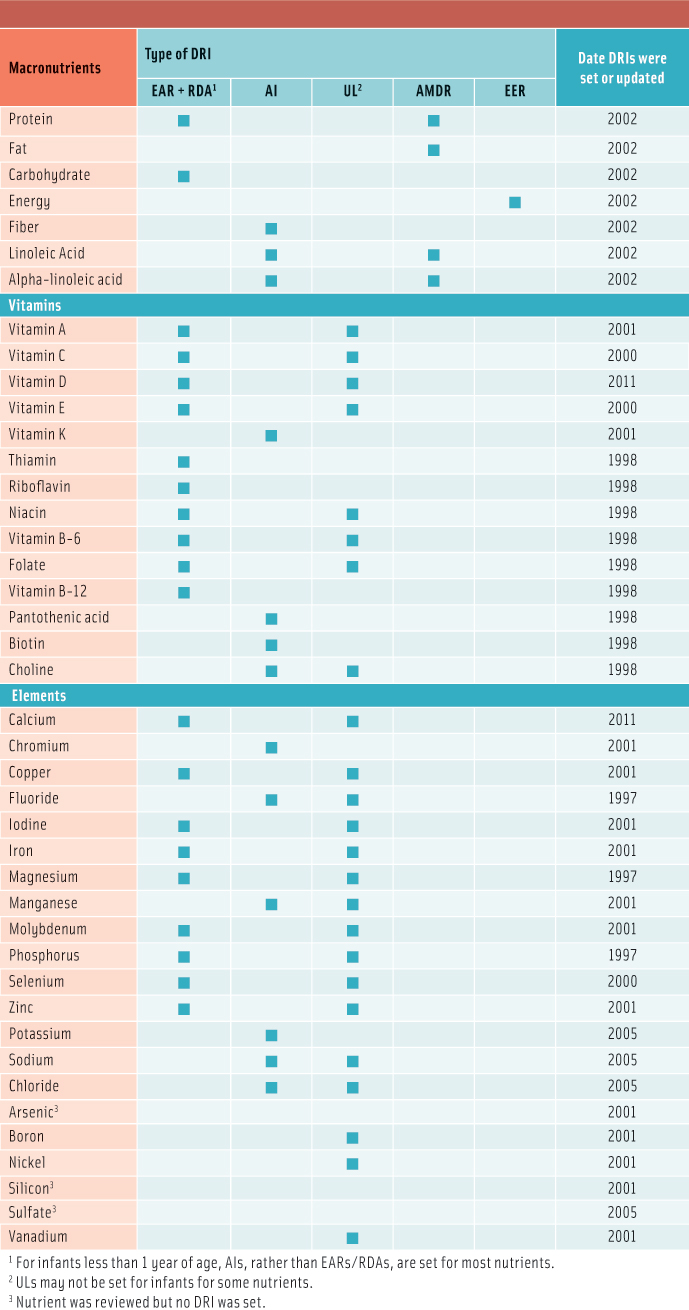



Food Scientists Dietary Reference Intakes An Important Alliance Ift Org
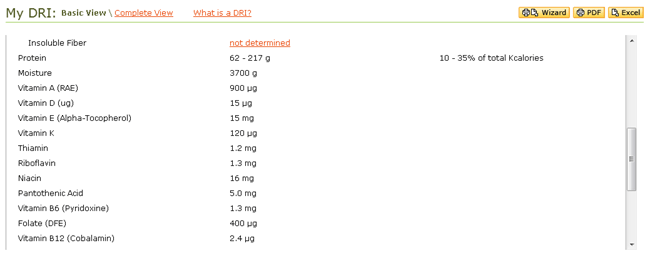



Iprofile 3 1 Help




Usda Dri Calculator For Healthcare Professionals By Blue Pane Studio Llc



3




Options For Basing Dietary Reference Intakes Dris On Chronic Disease Endpoints Report From A Joint Us Canadian Sponsored Working Group Abstract Europe Pmc



2




Present Knowledge In Nutrition Nutrient Databases Sciencedirect



Food Nutrition Apps Ctauclm Ciencia Y Tecnologia De Alimentos Uclm




Percentage Of Dietary Reference Intakes Dri Per Serving Nutrient New Download Table




What Are The Recommended Dietary Allowances Rdas And The Dietary Reference Intakes Dris Food And Nutrition Infor Nutrition Information Dietary Nutrition




National Agricultural Library




1 Which Of The Following Dri Values Is Used For Food Chegg Com



Plos One The Nutrient Balance Concept A New Quality Metric For Composite Meals And Diets




Dieta Escolar Apuntes De Nutricion Docsity



2




Percentage Of Dietary Reference Intakes Dri Per Serving Nutrient New Download Table




Options For Basing Dietary Reference Intakes Dris On Chronic Disease Endpoints Report From A Joint Us Canadian Sponsored Working Group Abstract Europe Pmc




Policy Analysis Of Standards For Institutional Purchasing Of



1
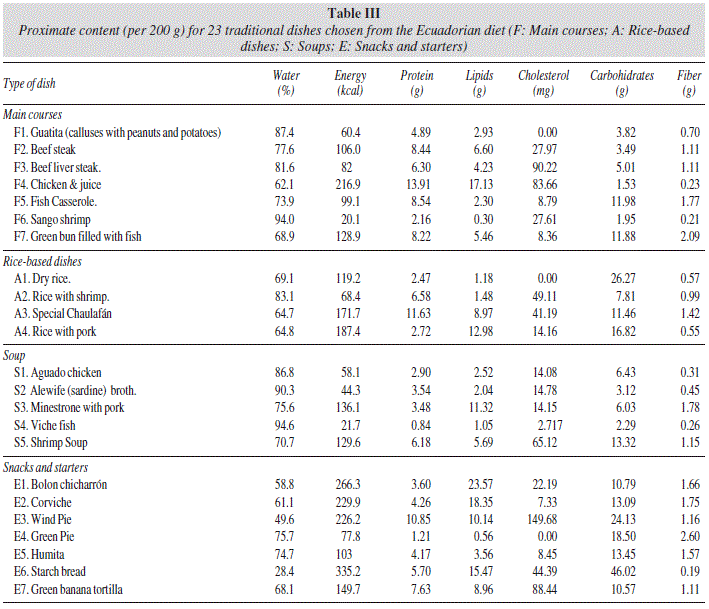



0212 1611 Nutricion Hospitalaria Nutr Hosp 0212 1611 Grupo Aran S0212 10 3305 Nh 13 28 5 6766 Preliminary Nutritional Assessment Of The Ecuadorian Diet Based On A 24 H Food Recall Survey In Ecuador Evaluacion Nutricional




About Usda Dri Calculator For Healthcare Professionals Ios App Store Version Apptopia
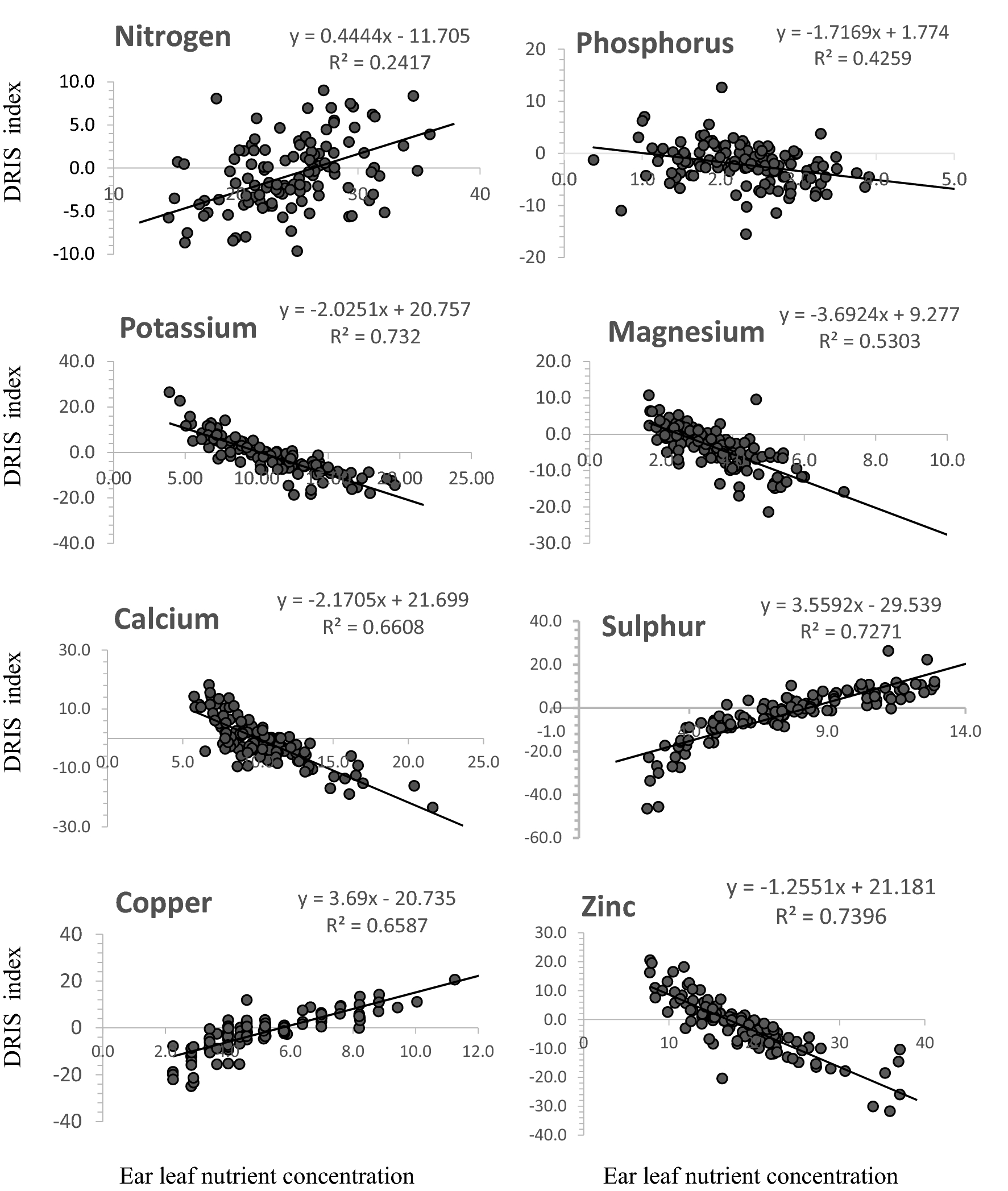



Understanding Nutrient Imbalances In Maize Zea Mays L Using The Diagnosis And Recommendation Integrated System Dris Approach In The Maize Belt Of Nigeria Scientific Reports




Chapter 2 Tools For Healthy Eating 10




Usda Daily Reference Intakes Dri S By The National Academy Of Download Table
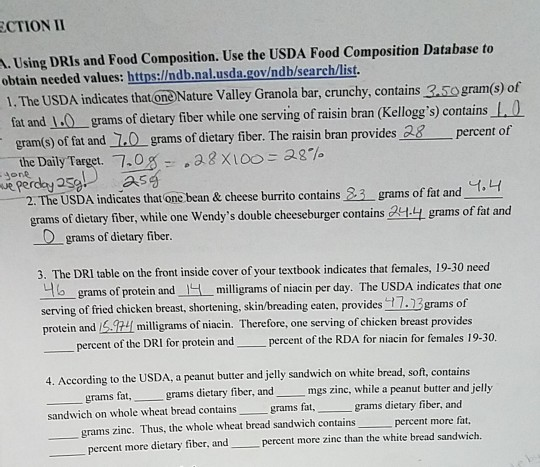



Dietetics Class Please Help With The Ones In Blanks Chegg Com
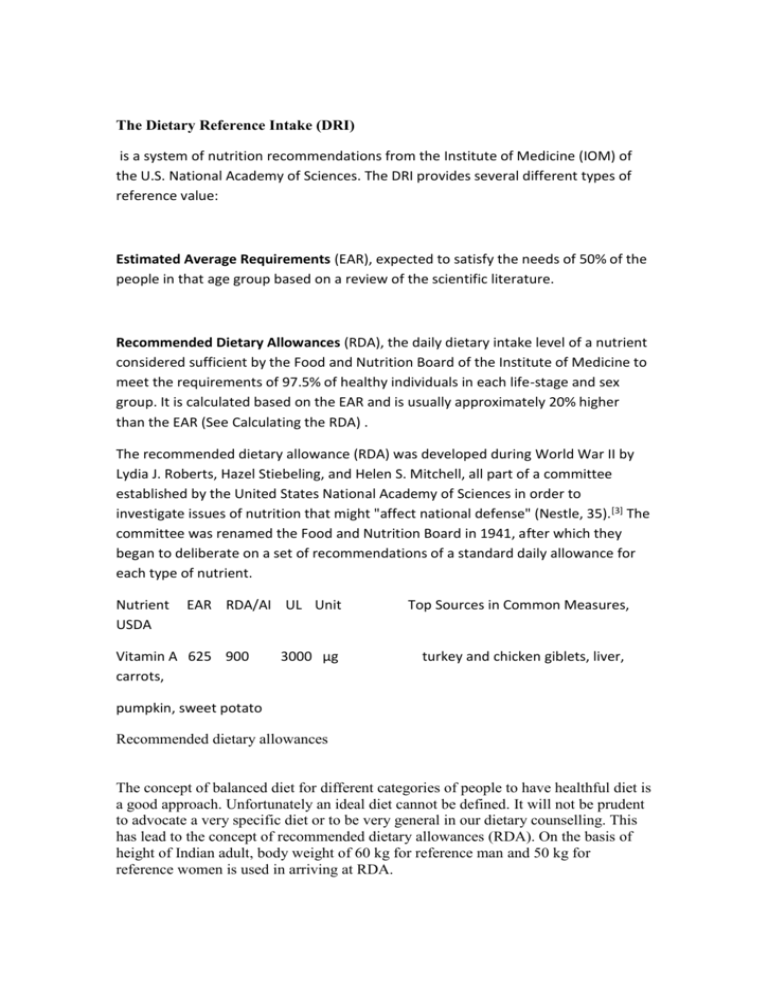



The Food Table Or Board
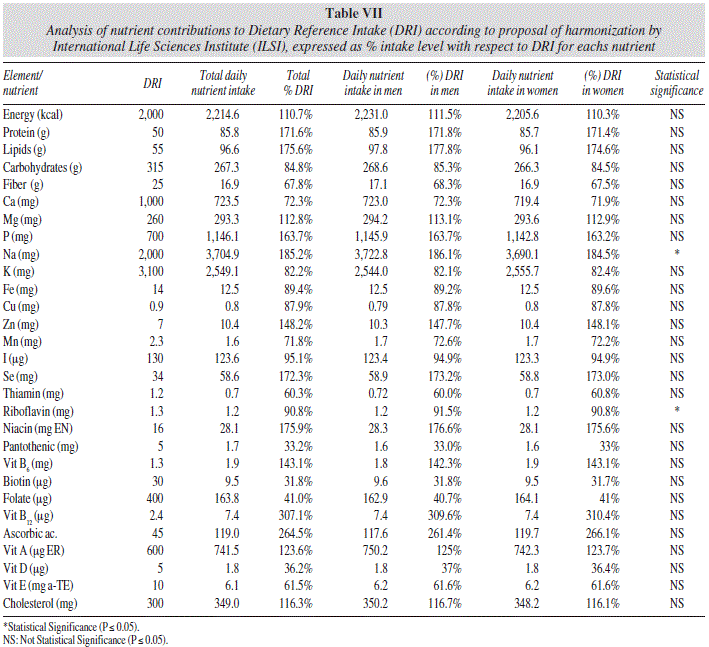



0212 1611 Nutricion Hospitalaria Nutr Hosp 0212 1611 Grupo Aran S0212 10 3305 Nh 13 28 5 6766 Preliminary Nutritional Assessment Of The Ecuadorian Diet Based On A 24 H Food Recall Survey In Ecuador Evaluacion Nutricional



Http Agri Ckcest Cn Ass Nk003 Pdf




The Development And Application Of Food Composition Databases



0 件のコメント:
コメントを投稿